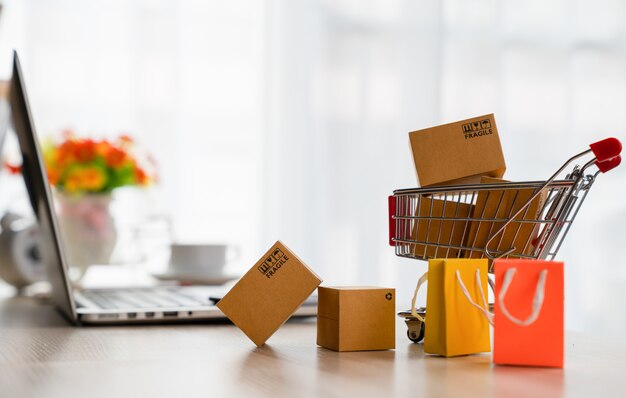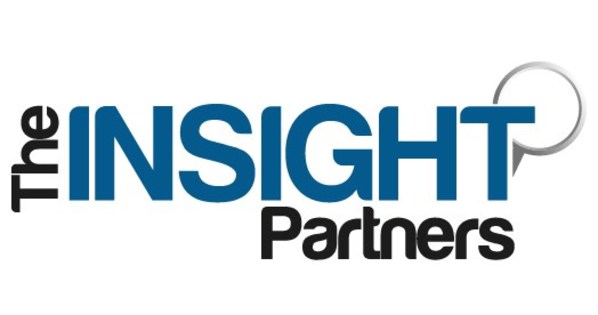Introduction
Shopping used to entail going to real stores, negotiating busy aisles, and waiting in long checkout lines. However, the introduction of on-demand delivery apps has changed the retail environment, altering how we purchase. These apps have grown in popularity and are influencing the future of purchasing. In this post, we will look at the influence of on demand delivery apps and how they are changing the retail landscape.
The Rise of On-Demand Delivery Apps
On-demand delivery apps have surged in popularity in recent years, thanks to advancements in technology, the ubiquity of smartphones, and shifting consumer preferences. These apps connect consumers to a wide array of goods and services, allowing them to order what they need with a few taps on their mobile devices.
Leading the charge are platforms like Uber Eats, DoorDash, Instacart, and Amazon Prime Now, which have not only revolutionized the food delivery industry but have also expanded into grocery, retail, and more. In addition, local players and startups have emerged, catering to specific niches and markets, providing consumers with even more choices.
Convenience Redefined
The primary driver behind the success of on-demand delivery apps is the unparalleled convenience they offer. With just a few taps, consumers can order a meal, groceries, electronics, or even furniture and have it delivered to their doorstep within hours or even minutes. This convenience factor has been a game-changer for many consumers, especially those with busy lifestyles or mobility constraints.
- Grocery Shopping: Grocery delivery apps like Instacart and Amazon Fresh have made it possible for consumers to shop for groceries without leaving their homes. This convenience is particularly significant in times of health crises, as seen during the COVID-19 pandemic, when many people turned to online grocery shopping to minimize their exposure to crowded stores.
- Restaurant Food Delivery: The popularity of food delivery apps like Uber Eats and DoorDash has soared, offering an extensive range of restaurant options at the customer’s fingertips. Whether it’s fast food, gourmet cuisine, or international dishes, consumers can have their favorite meals delivered to their homes quickly and easily.
- Retail Shopping: Beyond groceries and restaurant meals, on-demand delivery apps are changing how we shop for retail items. Retail giants like Amazon have set new standards for fast delivery, with services like Amazon Prime Now, which promises to deliver products to customers within two hours.
- Prescription Medication: On-demand delivery apps have even expanded into the healthcare sector. Companies like CVS and Walgreens offer prescription medication delivery, ensuring that patients receive their medications without the hassle of visiting a physical pharmacy.
A Boon for Small Businesses
While large corporations have certainly harnessed the potential of on-demand delivery apps, small and local businesses have also benefited from this technological revolution. Smaller retailers and restaurants can now reach a broader customer base without the need for a brick-and-mortar presence. They can partner with on-demand delivery apps to expand their reach, taking advantage of the app’s existing infrastructure and customer base.
This symbiotic relationship between small businesses and on-demand delivery apps has been especially critical during the COVID-19 pandemic. With lockdowns and restrictions in place, many small businesses were able to survive and even thrive by relying on delivery services to keep sales coming in.
Sustainability and Environmental Concerns
The convenience offered by on-demand delivery apps comes with its fair share of challenges, especially concerning sustainability and the environment. The rapid growth of these apps has led to increased traffic congestion and additional carbon emissions due to the frequent delivery of single items or small orders. Some companies have recognized this issue and are taking steps to mitigate their environmental impact.
- Bike and Electric Vehicle Deliveries: Many on-demand delivery apps, especially in urban areas, are transitioning to greener modes of transportation. Companies like Uber Eats and Postmates have experimented with bike and electric scooter deliveries, reducing their carbon footprint.
- Efficiency Improvements: To reduce the environmental impact of multiple deliveries, some companies are implementing more efficient route planning and grouping multiple orders together for a single driver.
- Packaging Sustainability: Some apps are also encouraging their partner businesses to use eco-friendly packaging and reduce excess materials, minimizing waste.
It’s worth noting that while these steps are encouraging, the on-demand delivery industry still has a long way to go in terms of achieving true sustainability.
The Future of Physical Stores
The rise of on-demand delivery apps has prompted discussions about the future of physical retail stores. While these apps offer unparalleled convenience, it does not necessarily mean the end of brick-and-mortar retail. Instead, it’s pushing traditional retailers to adapt and innovate.
- Reinventing the In-Store Experience: To remain competitive, physical stores are focusing on creating unique, engaging in-store experiences that can’t be replicated through an app. For example, stores are implementing augmented reality (AR) and virtual reality (VR) technologies to enhance the shopping experience.
- Hybrid Models: Many retailers are adopting a hybrid model, combining the best of both worlds. They offer in-store shopping alongside robust online ordering and delivery options. This flexibility caters to various consumer preferences.
- Curbside Pickup: Retailers are increasingly offering curbside pickup options, allowing customers to shop online and then conveniently collect their purchases without entering the store. This meets the need for convenience without the delivery aspect.
The Impact on the Gig Economy
On-demand delivery apps have also significantly impacted the gig economy. These platforms have created opportunities for individuals to work as drivers, shoppers, or delivery personnel. This gig economy has provided flexibility to workers, enabling them to choose their working hours and earn income on their terms. However, it has also raised concerns about worker rights and job security.
- Flexible Work: The gig economy has allowed people to earn money on the side or as their primary source of income while maintaining flexibility. This is particularly appealing to students, freelancers, or those seeking temporary income.
- Worker Protections: The rise of the gig economy has prompted discussions about labor laws and protections. Many countries are exploring ways to ensure that gig workers receive fair pay, benefits, and legal protections similar to traditional employees.
- Rideshare to Multi-Service: Apps initially known for ridesharing, like Uber, have diversified into food delivery and other services, expanding income opportunities for their drivers.
The Challenges Ahead
While on-demand delivery apps have transformed the way we shop, they also face various challenges as they shape the future of retail. These challenges include:
- Competition: The market for on-demand delivery apps is highly competitive, and companies are constantly innovating to stay ahead. This intense competition can lead to price wars and decreased profitability.
- Regulation: Governments and regulatory bodies are grappling with how to oversee and regulate the gig economy, ensuring worker protections and consumer safety.
- Data Privacy: The collection and handling of user data are critical concerns. Consumers are increasingly aware of the data they share with these apps and demand more robust privacy protections.
- Sustainability: As mentioned earlier, the environmental impact of these apps is a growing concern, and companies need to take more significant steps towards sustainability.
- Cybersecurity: The digital nature of on-demand delivery apps makes them susceptible to cybersecurity threats, including data breaches and hacking attempts. Ensuring the security of customer information is paramount.
Conclusion
On-demand delivery apps have fundamentally changed the way we shop, offering unprecedented convenience and transforming the retail landscape. While they have brought immense benefits to consumers, businesses, and gig workers, they also pose challenges that must be addressed to ensure a sustainable and equitable future.
As technology continues to evolve, on-demand delivery apps will likely adapt and expand further into various sectors, from healthcare to home services. The future of shopping is indeed being redefined by these platforms, and the only constant will be change. It remains to be seen how the industry will evolve to meet the ever-growing demands and expectations of consumers in the years to come.




